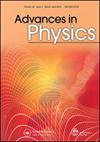Functional renormalization group for multi-orbital Fermi surface instabilities
IF 35
1区 物理与天体物理
Q1 PHYSICS, CONDENSED MATTER
引用次数: 123
Abstract
Technological progress in material synthesis, as well as artificial realization of condensed matter scenarios via ultra-cold atomic gases in optical lattices or epitaxial growth of thin films, is opening the gate to investigate a plethora of unprecedented strongly correlated electron systems. In a large subclass thereof, a metallic state of layered electrons undergoes an ordering transition below some temperature into unconventional states of matter driven by electronic correlations, such as magnetism, superconductivity (SC), or other Fermi surface (FS) instabilities. While these phenomena have been a well-established direction of research in condensed matter for decades, the variety of today's accessible scenarios pose fundamental new challenges to describe them. A core complication is the multi-orbital nature of the low-energy electronic structure of these systems, such as the multi-d orbital nature of electrons in iron-pnictides and transition-metal oxides in general, but also electronic states of matter on lattices with multiple sites per unit cell such as the honeycomb or kagome lattice. In this review, we propagate the functional renormalization group (FRG) as a suited approach to investigate multi-orbital FS instabilities. The primary goal of the review is to describe the FRG in explicit detail and render it accessible to everyone both at a technical and intuitive level. Summarizing recent progress in the field of multi-orbital FS instabilities, we illustrate how the unbiased fashion by which the FRG treats all kinds of ordering tendencies guarantees an adequate description of electronic phase diagrams and often allows to obtain parameter trends of sufficient accuracy to make qualitative predictions for experiments. This review includes detailed and illustrative examples of magnetism and, in particular, SC for the iron-pnictides from the viewpoint of FRG. Furthermore, it discusses candidate scenarios for topological bulk singlet SC and exotic particle–hole condensates on hexagonal lattices such as sodium-doped cobaltates, graphene doped to van-Hove filling, and the kagome Hubbard model. In total, the FRG promises to be one of the most versatile and revealing numerical approaches to address unconventional FS instabilities in future fields of condensed matter research.多轨道费米表面不稳定性的泛函重整化群
材料合成的技术进步,以及通过光学晶格中的超冷原子气体或薄膜外延生长来人工实现凝聚态情景,为研究大量前所未有的强相关电子系统打开了大门。在一个大的亚类中,层状电子的金属状态在一定温度下经历有序转变,进入由电子相关性驱动的非常规物质状态,如磁性、超导性(SC)或其他费米表面(FS)不稳定性。虽然这些现象几十年来一直是凝聚态物质研究的一个既定方向,但今天各种各样的可访问场景对描述它们提出了根本性的新挑战。一个核心的复杂性是这些系统的低能电子结构的多轨道性质,例如铁- nictides和过渡金属氧化物中电子的多维轨道性质,以及每个单元具有多个位置的晶格(如蜂窝或kagome晶格)上物质的电子状态。在这篇综述中,我们推广了功能重整化群(FRG)作为研究多轨道FS不稳定性的合适方法。审查的主要目标是明确详细地描述FRG,并使每个人都能在技术和直观层面上访问它。总结了最近在多轨道FS不稳定性领域的进展,我们说明了FRG处理各种有序趋势的无偏方式如何保证对电子相图的充分描述,并经常允许获得足够精确的参数趋势,以便对实验进行定性预测。这篇综述包括从FRG的角度详细和说明磁性的例子,特别是SC。此外,它还讨论了拓扑体单线态SC和外来粒子-空穴凝聚在六方晶格上的候选场景,如钠掺杂钴酸盐,石墨烯掺杂到van-Hove填充,以及kagome Hubbard模型。总的来说,FRG有望成为未来凝聚态研究领域中解决非常规FS不稳定性的最通用和最具揭示性的数值方法之一。
本文章由计算机程序翻译,如有差异,请以英文原文为准。
求助全文
约1分钟内获得全文
求助全文
来源期刊

Advances in Physics
物理-物理:凝聚态物理
CiteScore
67.60
自引率
0.00%
发文量
1
期刊介绍:
Advances in Physics publishes authoritative critical reviews by experts on topics of interest and importance to condensed matter physicists. It is intended for motivated readers with a basic knowledge of the journal’s field and aims to draw out the salient points of a reviewed subject from the perspective of the author. The journal''s scope includes condensed matter physics and statistical mechanics: broadly defined to include the overlap with quantum information, cold atoms, soft matter physics and biophysics. Readership: Physicists, materials scientists and physical chemists in universities, industry and research institutes.
 求助内容:
求助内容: 应助结果提醒方式:
应助结果提醒方式:


